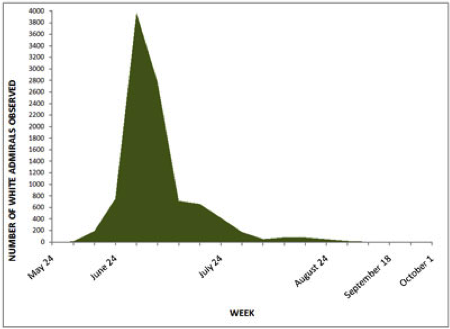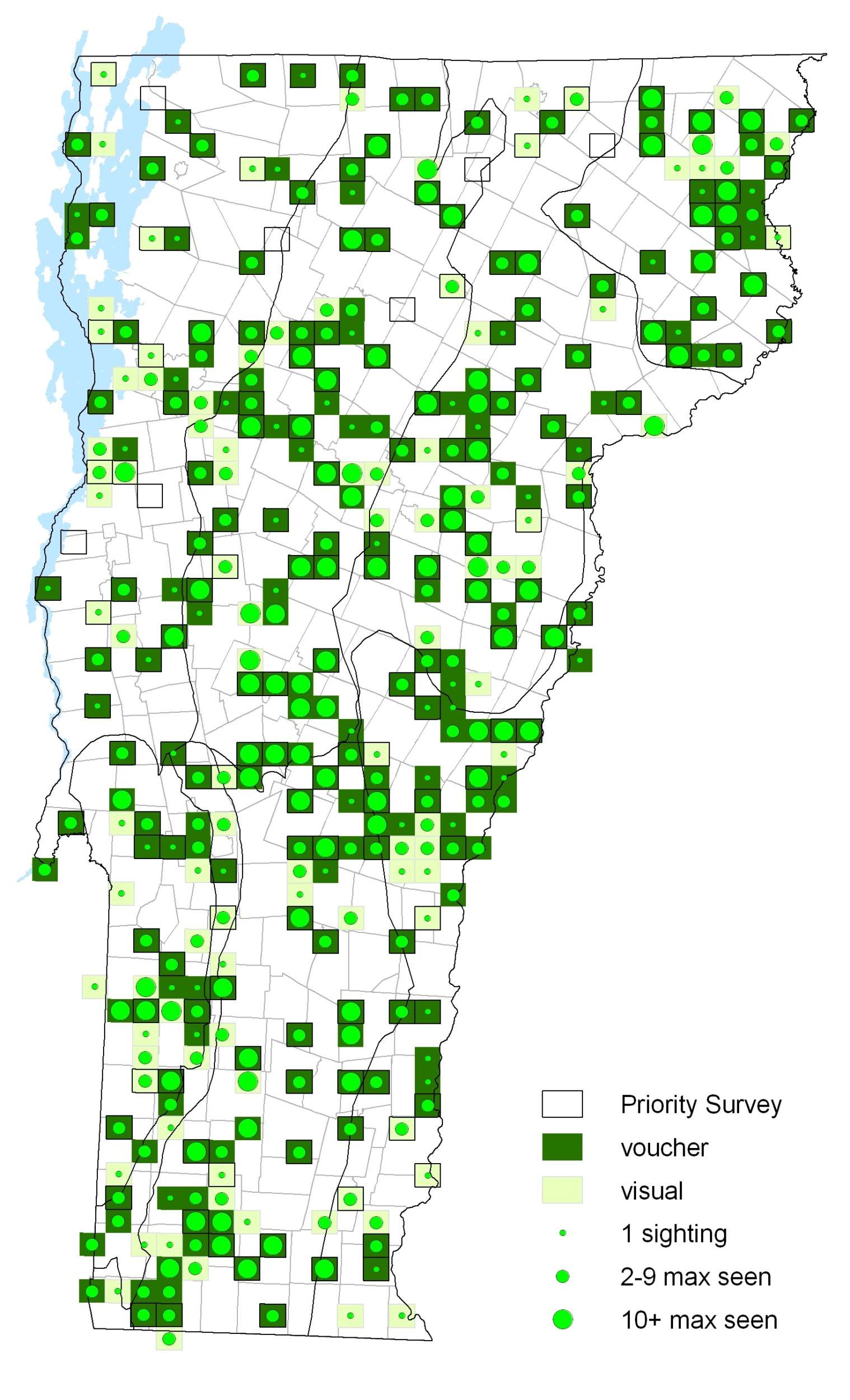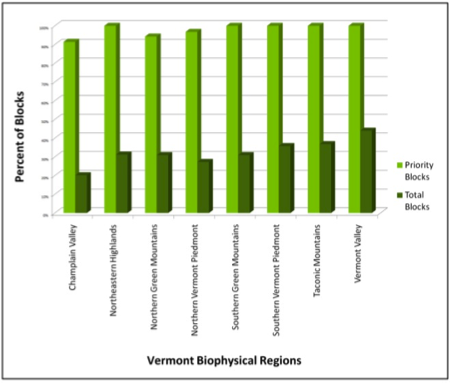|
Resident Conservation Status North American Range |
The white band is a recessive trait. It could potentially occur in any population. Both the White Admiral and the Red-spotted Purple interbreed where their ranges overlap producing intergrades with partial bands. Males perch 3 feet or more above the ground on trees and tall bushes and rarely patrol for females. Eggs are laid singly on tips of hostplant leaves; caterpillars eat leaves. Third instar larvae overwinter.
Identification
Upperside is black with broad white median bands on both wings; hindwing has a marginal row of blue dashes and a submarginal row of red dots. Underside is reddish-brown with white median bands as on the upperside.
 Flight
Flight
Flight periods of the White Admiral and Red-spotted Purple overlap. Both appear to have a smaller second generation in August. White Admiral can be incredibly abundant in late June and early July. Extreme dates: White Admiral – 24 May 2004 in Pownal (K. Hemeon) and 1 October 2002 in South Burlington.
Distribution and Habitat
During VBS White Admirals were extremely abundant throughout the state. Red-spotted Purples were found primarily in southern half of Vermont. Hostplants are the leaves of many species of deciduous trees and shrubs. Adults feed from sap flows, rotting fruit, carrion, dung, and occasionally nectar from small white flowers. White Admirals also sip aphid honeydew.







